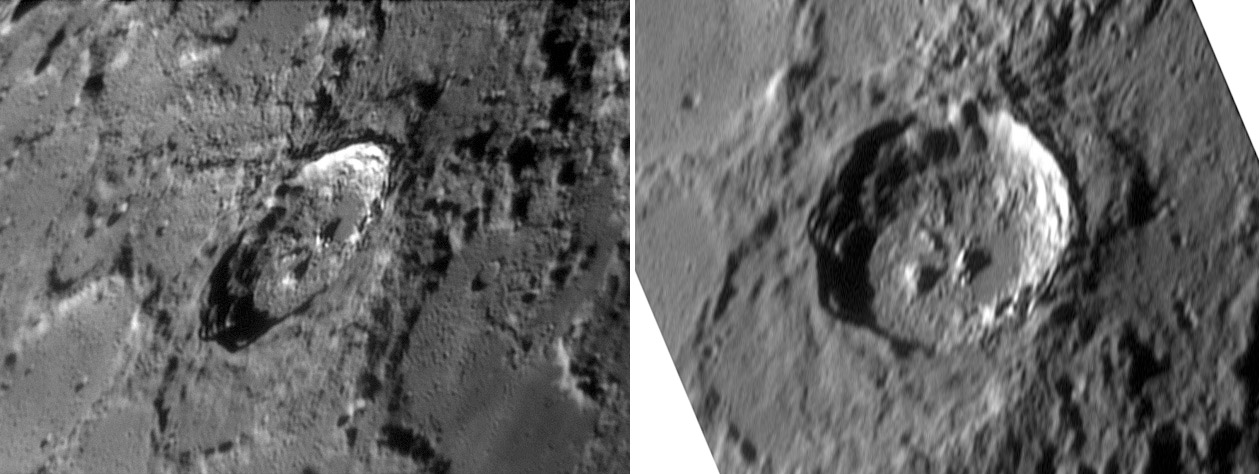 image by Damian Peach
image by Damian Peach
Do you know of another crater with twin peaks? Central peaks are formed by the rebound of ground zero from the compression of the impact and thus most peaks are single or grouped into a cluster. I wonder what the special circumstances were that caused Philolaus to have two clearly separated peaks. Were there two closely spaced projectiles impacting side by side? Damian’s image shows other interesting characteristics in this 71 km wide north polar region crater. And to make it easier to see inside the crater I have used Photoshop to remove foreshortening. Most of the floor is hilly but a smooth patch of impact melt is on the north side. The Lunar Orbiter IV image shows that more melt pockets are slopped on to the tops of wall terraces. Concentration of melt on one side of a crater often occurs when the impact is oblique – perhaps that has something to do with the twin peaks. But maybe not – look at the nearby crater Carpenter – it also has twin peaks… Oh, and another twin peak crater? Click here!
Technical Details:
9.25″ Schmidt Cassegrain. Lumenera LU075M CCD camera.
Related Links:
Rükl chart 3
Damian’s website
REALLY SUPPORT LPOD - VISIT A SPONSOR (CLICK AN AD BELOW)!
COMMENTS?
Click on this icon File:PostIcon.jpg at the upper right to post a comment.



